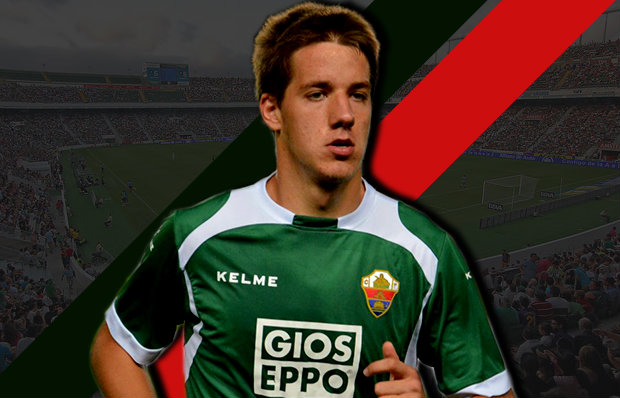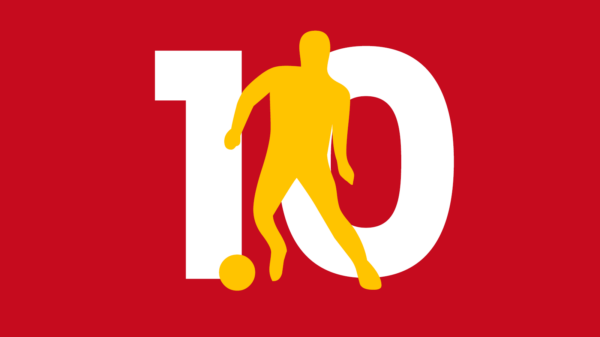Chelsea are known for reaching out to the farthest corners of the globe to get the best young stars. Mario Pašalić is one such youngster snapped up by the London club. Juraj Vrdoljak has a scout report on the young Croat.

Croatia, and the Balkans in general, had always spawned great footballing talents. Despite the low-end facilities and clubs constantly struggling to avoid bankruptcy, each season witnesses more than a few names from the ex-Yugoslav region making a breakthrough on the big scene. One of the most prolific clubs of the region is Hajduk Split, an unavoidable name when it comes to developing talents and talking about youth academies in ex-Yugoslavia. Recently, the Swiss-based International Center for Sports Studies (CIES) did a research on youth academies in Europe by categorizing players based on their native clubs. The results were quite interesting; while Ajax, unsurprisingly, holds the pole position in developing players for top leagues, the second and third places are held by Partizan Belgrade and Hajduk Split respectively. Furthermore, and, again, unsurprisingly, the famous Ajax’s Jeugdopleiding and Hajduk’s academy are structurally linked by one man – Tomislav Ivić.
The coach – named the most successful coach in history by Gazzeta dello sport in 2007. – won a number of trophies with more than a few famous European clubs including Porto, Anderlecht, Panathinaikos and Atletico Madrid and spent two years in late 70’s coaching Ajax. As the years went by, it was recognized that the appointment of Ivić as the head coach, after the second stint of great Rinus Michels, had not been done unadvisedly.
The approach that Ivić had, especially when working with young players, been widely defined as a Yugoslav version of totaalvoetbal. Michels saw that Hajduk’s style under Ivić resembled his idea of the game with one notable difference. Ivić looked less to develop an attacking approach like Michels, instead placing more significance to defending. “It’s much easier to learn how to defend than how to attack”, Ivić used to say. Coupled with his, then unique, approach to developing talents by finding them space in the team, which he saw as a unified entity as opposed to previous postulates in Yugoslavia that glorified the cult of an individual, he left a lasting mark on the future of Hajduk Split’s youth academy. One of the latest players that originates from Hajduk, with a bright future ahead of him, is young Mario Pašalić.
WHO IS MARIO PAŠALIĆ?
Mario Pašalić, 20 in three months’ time, has hit the headlines this summer when he signed a four-year contract with Chelsea. However, as Chelsea are keen to snap up talents across Europe each transfer window, a lot of questions were raised about this Croatian teenager and whether he has the potential to ‘survive’ being loaned out and catch a glimpse of the Chelsea first team squad. Born in Germany, his family returned to Croatia, where Mario started to practice football with the local side NK GOŠK from Kaštel Gomilica, a town that is a part of the Split surrounding agglomeration. He was soon spotted by Hajduk coaches and expressly, at the age of 11, joined Hajduk.
Advancing through youth categories of both Hajduk and the national side, his first breakthrough came in 2012, after he came off the bench late in the final game of the championship and bagged the winning goal that brought the Hajduk youth team the title that season. Only seventeen at the time, Pašalić was still eligible to play for younger selections of the club. His contribution and hard work was soon spotted by first team coaches before he succumbed to a dangerous bacterial infection that sidelined him for six months, posing a threat to his still fledging career. Luckily, he managed to fully recover and was back on the field in the spring of 2013, and, shortly after, finally making his debut for the first team.
His development was outstanding, and he became a first-team regular in season 2013/2014, a season in which he found the net on 11 occasions, adding 5 assists as well; most notable were his performances against arch-rivals Dinamo Zagreb, where he scored both goals in a 2-0 victory and his brace in a 2-1 win over city rivals RNK Split. After refusing a move to Catania in the winter of 2013, both him and the club accepted a 2.7 mil € offer from Chelsea, where he moved soon after making the 30-men provisional national team squad for the World Cup in Brazil this summer. Although he didn’t make it in the final squad, he did make his debut for the national team in a friendly vs Cyprus this September, while Chelsea loaned him out to Primera side Elche. A true fairy-tale scenario for a teenager who, only a year and a half ago, was unsure whether he could ever play football on a professional level.
STYLE OF PLAY, STRENGTHS AND WEAKNESSES
Pašalić’s nominal position is in central midfield, behind the attacking trio when playing in a 4-2-3-1 formation, but he tends to move more forward, joining in as an attacking midfielder rather than taking a role as a classical deep lying playmaker. He is also adept in a 4-3-3 system, either as a modern box-to-box midfielder who tends to occupy wide spaces. But in Elche, coach Segura employs him in both roles – as a deep lying midfielder as well as playing behind the sole striker (Rodriguez) in a 4-2-3-1 formation. After their defeat against Valencia in late October, Elche switched to a more cautious variant of 4-4-2, where Pašalić had freedom to move forward as part of the diamond midfield, exploiting and bursting into the pockets of space in front of him.
The first thing you notice about Pašalić, aside from his two-footedness, is the constant threat he poses with his accurate through balls. In Elche this season he successfully completed 75% of his passes, with an average of 21 passes per game, as per whoscored.com. But perhaps the strongest aspect of his play is his vision and exploitation of space. While playing for Hajduk he perfected the craft of pushing into space from behind, escaping the opposition’s back line using his pace and tactical awareness. He demonstrated that perfectly when scoring his debut goal for Elche in a similar fashion while playing a pre-season friendly v Alcoyano this summer.
If one has to locate a weak point that would be his tactical inconsistency whist performing different roles. Pašalić certainly has the talent to become a versatile midfielder, but he still lacks the skillset and positional awareness to successfully shift through several midfield roles during a match, often getting caught adrift, uncertain of his specific assignments on the field. He also, when fulfilling his defensive roles, still lacks the strength when getting into duels, often resulting in him being left out on the losing end. That defensive part of his play is perhaps the biggest aspect in which he can still develop a lot.
When Jonathan Wilson was talking about a modern evolution of midfielders’ role, he mentioned a term carrier or a surger; “a player capable of making late runs or carrying the ball at his feet“. Pašalić has all the skills to fit such a description in the future, boasting an impressive capability of retrieving the ball and efficiently generating attacks as well as demonstrating a good sense of positioning in the opponent’s half. His style of play has been dubbed ballackesque by some, while others liken him to his better-known compatriot, Luka Modrić (a comparison which is perhaps a bit misguided due to Pašalić’s more attack-minded style of play), but Mario himself cites Frank Lampard as his idol. Will he live up to big Frankie’s role in Chelsea one day? Perhaps. But either way, with the right touch, Pašalić can find himself reaching the top heights of international football, even bigger than he is chasing right now.
Written by Juraj Vrdoljak
- Scout Report | Mario Pašalić : Croatia’s Upcoming Talent - November 25, 2014
- Atletico Madrid Tactical Preview: How will Diego Simeone’s side set up in the 2014-15 season? - August 24, 2014
- World Cup Heroes: Davor Suker and the 1998 World Cup - June 23, 2014


























































